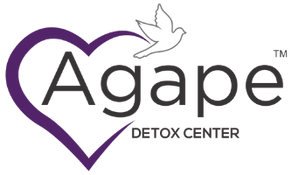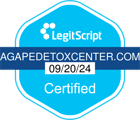When someone decides to seek help for substance use, it’s a huge and courageous step—one that often comes with a lot of questions. One of the first and most common is: “How long is residential rehab?” And it’s a valid concern. Whether you’re asking for yourself or someone you love, knowing how much time it takes can help with planning, setting expectations, and understanding the path ahead.
Residential rehab, also known as inpatient treatment, is a structured program where individuals live at a treatment facility and receive round-the-clock support. It provides a safe, substance-free environment with access to professional medical care, therapy, and group support. Unlike outpatient treatment, which allows people to go home at night, residential rehab removes everyday triggers and distractions, letting people focus entirely on recovery.
The length of stay varies based on personal and clinical factors. In this blog, we’ll explore common timelines, what affects them, and how to determine the best fit for your situation.
Table of Contents
ToggleTypical Length of Residential Rehab
Residential rehab programs are usually categorized by duration: 30, 60, 90 days, and long-term options lasting six months or more. While 30-day programs are the most common—partly due to insurance limits—many experts suggest that longer stays often lead to better long-term recovery.
Each duration offers a different level of support:
Short-Term Rehab (28–30 Days)
Short-term residential programs typically last about a month and are designed to help individuals detox safely and begin their recovery journey within a structured environment. These programs emphasize initial stabilization, foundational addiction education, and the creation of a basic aftercare plan.
They are particularly suited for individuals with a mild or recent substance use history. Because of the brief duration, the stay allows for quick entry into treatment and lower overall costs. However, the limited time frame can make it difficult to address deeper psychological issues or build long-term behavioral changes. Participants usually follow a tightly scheduled routine, attend group and individual therapy, and begin to learn essential coping skills to support recovery after discharge.
Medium-Term Rehab (60 Days)
A 60-day rehab program provides a more comprehensive treatment experience, giving individuals additional time to explore the emotional and psychological causes of their addiction. With more sessions for individual therapy, group work, and skills-building, clients can develop stronger coping strategies and begin rebuilding their lives in a more meaningful way.
This length of stay is often beneficial for those who need more than detox but may not require a full 90 days or longer. It strikes a balance between depth of care and time commitment.
Long-Term Rehab (90 Days or More)
Longer-term rehab is often recommended for individuals facing chronic, recurring, or severe substance use disorders. These programs may last three months, six months, or even up to a year, depending on the individual’s needs and the treatment model.
With extended time in care, individuals can work intensively on healing from addiction while also addressing any co-occurring mental health issues. There’s more opportunity to reinforce new habits, manage triggers, and slowly transition back to daily responsibilities. While a longer stay may come with higher financial and personal commitments, the immersive nature of the experience often leads to deeper transformation and stronger preparation for life after treatment. Participants typically engage in a structured, community-oriented setting where they learn accountability, life skills, and relapse prevention over an extended period.
Factors That Influence the Duration of Residential Rehab
The ideal length of stay in a residential rehab program depends on a range of interconnected factors. It’s not a one-size-fits-all decision, but rather a personalized assessment based on the individual’s needs:
Severity and History of Addiction
The duration of substance use, types of substances involved, and level of physical dependence all play a role. Long-term or severe addictions, especially those involving multiple substances, often require extended treatment to address deeply rooted behaviors and ensure lasting change.
Co-occurring Mental Health Disorders
Many individuals also face conditions such as depression, anxiety, PTSD, or bipolar disorder—a situation known as dual diagnosis. Treating both mental health and addiction simultaneously typically requires more time in a structured setting.
Physical Health Complications
Prolonged substance use can damage major organs and bodily systems. Addressing medical issues alongside addiction treatment can extend the length of rehab to ensure full stabilization.
Past Treatment and Relapse History
Individuals who have relapsed after previous rehab attempts may benefit from longer, more intensive treatment to break the cycle and reinforce recovery strategies.
Engagement and Motivation
A person’s level of participation, willingness to change, and response to therapy can affect how quickly they progress. While high motivation helps, sustainable recovery often takes time and consistency.
Support System at Home
If the individual lacks a stable, substance-free living environment, a longer rehab stay—or a step-down option like sober living—may be necessary to prepare for life after treatment.
Program Structure and Philosophy
Rehab centers vary in their approaches and lengths of treatment. Some offer 30-day programs, while others provide extended care lasting 60, 90 days or more, depending on their therapeutic model.
Insurance and Financial Factors
Although clinical need should drive decisions, insurance coverage and available financial resources can sometimes influence how long someone stays in treatment.
How the Severity of Addiction Affects Rehab Length?
The severity of addiction is one of the most important factors in determining how long treatment should last. It goes beyond the type of substance used and includes several key aspects:
- Duration of Use: Substance use over several years often calls for longer and more structured treatment.
- Amount and Frequency: Daily, heavy use usually needs more intensive care than occasional or lighter use.
- Physical Dependence: Severe withdrawal symptoms indicate a need for extended medical and therapeutic support.
- Life Disruption: Serious damage to health, relationships, or stability suggests a more comprehensive treatment approach.
- Relapse History: Multiple relapses after past treatments point to the need for longer, deeper recovery programs.
How to Choose the Right Length of Rehab for You?
Choosing the appropriate rehab duration is a critical decision, best made in consultation with professionals. Consider these steps:
1. Honest Self-Assessment
Reflect honestly on the severity of your addiction, any co-occurring mental health issues, previous relapse history, and your home environment/support system. Use the factors discussed earlier as a guide.
2. Professional Consultation
Speak with an addiction specialist, therapist, doctor, or the admissions team at potential rehab centers. They can conduct a professional assessment and recommend an appropriate level of care and duration based on your specific circumstances.
3. Consider Logistics
Evaluate practical factors like insurance coverage, cost, and time away from responsibilities, but try not to let these be the sole determinants if a longer stay is clinically recommended. Explore options for financial aid, payment plans, or FMLA leave if applicable.
4. Prioritize Clinical Need
While practicalities matter, remember that investing adequate time in treatment significantly increases the likelihood of long-term success. Opting for a shorter stay solely due to convenience when a longer program is recommended can be counterproductive.
Does Insurance Cover Long-Term Residential Rehab?
Insurance coverage for long-term rehab varies by provider, plan, and policy. Most plans—especially under the ACA—cover some addiction treatment, but extended residential stays often require pre-authorization and proof of medical necessity. Coverage may be limited to a set number of days or begin with outpatient care.
Not all services may be fully covered; some therapies or amenities could involve extra costs. Contact your insurer or the rehab center’s admissions team to confirm coverage and understand your financial responsibilities.
Finding a Residential Rehab Program That Meets Your Needs
Once you have an idea of how long residential rehab is likely to take and have considered other factors, the next step is finding the right program. Look for:

- Accreditation and Licensing: Make sure the rehab is state-licensed and accredited by organizations like The Joint Commission or CARF.
- Evidence-Based Practices: Choose programs that use proven therapies such as cognitive behavioral therapy (CBT), dialectical behavioral therapy (DBT), Eye Movement Desensitization and Reprocessing (EMDR), and Motivational Interviewing (MI).
- Qualified Staff: Ensure the staff includes licensed therapists, counselors, medical professionals, and psychiatrists, especially for co-occurring conditions.
- Individualized Treatment: Confirm that treatment plans are tailored to each person’s unique needs and challenges.
- Appropriate Level of Care & Duration: The program should match your specific recovery needs in terms of intensity and length.
- Aftercare Planning: Check that the facility provides a solid plan for follow-up care and community support after discharge.
- Location and Environment: Consider if a nearby or distant setting works better, and if the space feels safe and supportive.
Take the Next Step Toward Healing at Agape Detox Center
Choosing the right rehab program can make all the difference—and at Agape Detox Center, your recovery journey is treated with the care, time, and individualized attention it deserves. Whether you need short-term support or long-term healing, our residential programs are designed to fit your unique recovery needs. Contact us today to explore your options and take the first step toward lasting recovery. Because you deserve a life beyond addiction—and Agape is here to help you reach it.

Stephanie Robilio is an accomplished Clinical Director at Agape Behavioral Healthcare. With a Master of Social Work degree, LCSW license, and extensive training in Rapid Resolution Therapy under her belt, she brings a wealth of expertise to her role. Her unique combination of education and experience allows her to provide exceptional care to clients and lead her team with confidence. Stephanie’s joy comes from witnessing the moments when her patients creatively connect the dots and bravely move toward reclaiming their power. Her purpose is to help individuals understand their past so they can create a future full of hope, growth, and success. Stephanie attributes a large portion of her success to the supportive culture and strong sense of community fostered by the Agape team.





